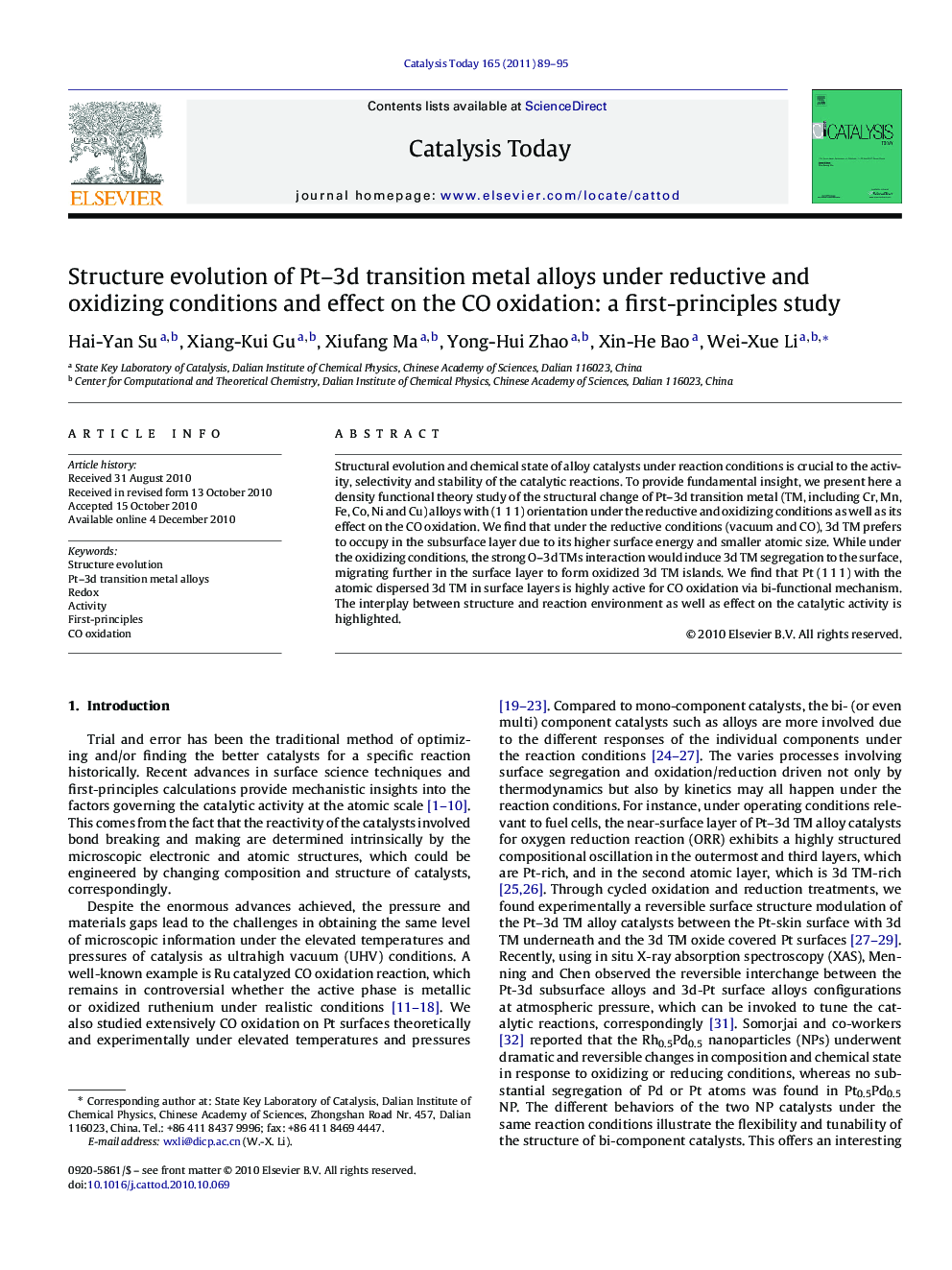| Article ID | Journal | Published Year | Pages | File Type |
|---|---|---|---|---|
| 56021 | Catalysis Today | 2011 | 7 Pages |
Structural evolution and chemical state of alloy catalysts under reaction conditions is crucial to the activity, selectivity and stability of the catalytic reactions. To provide fundamental insight, we present here a density functional theory study of the structural change of Pt–3d transition metal (TM, including Cr, Mn, Fe, Co, Ni and Cu) alloys with (1 1 1) orientation under the reductive and oxidizing conditions as well as its effect on the CO oxidation. We find that under the reductive conditions (vacuum and CO), 3d TM prefers to occupy in the subsurface layer due to its higher surface energy and smaller atomic size. While under the oxidizing conditions, the strong O–3d TMs interaction would induce 3d TM segregation to the surface, migrating further in the surface layer to form oxidized 3d TM islands. We find that Pt (1 1 1) with the atomic dispersed 3d TM in surface layers is highly active for CO oxidation via bi-functional mechanism. The interplay between structure and reaction environment as well as effect on the catalytic activity is highlighted.
Graphical abstractFigure optionsDownload full-size imageDownload high-quality image (237 K)Download as PowerPoint slideResearch highlights▶ Under reductive conditions, Pt-skin surface alloys with 3d transition metal (TM) is favorable. ▶ Under oxidizing conditions, 3d TM segregates to the Pt surface and oxidizes further. ▶ Higher activity for CO oxidation on atomic dispersed 3d TM in Pt surface layer.
